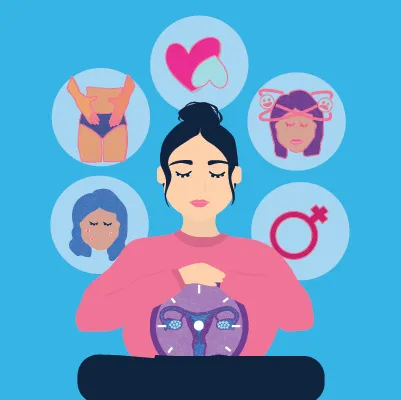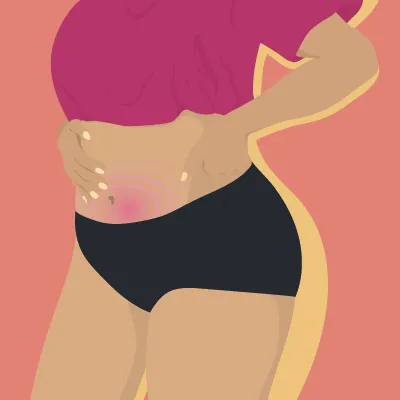Jan 18, 2022
Let’s Talk About Endometriosis
You may have heard of the condition endometriosis. Or maybe, despite the 1 in 9 menstruating people affected, you have no idea what it’s all about.
What is endometriosis?
So, what exactly is it? A condition, whereby the cells similar to those that line the uterus (the ‘endometrium’), grow in other locations such as organs in the pelvis or along the inside lining of the abdomen (called the ‘peritoneum’). When you’re ovulating, the endometrium thickens and then as our period arrives, the endometrium cells leave the body.
For those with endometriosis, the misplaced cells also thicken during ovulation. However, these misplaced cells that may be in the pelvic organs or stomach lining, don’t have the opportunity to leave the body when our period comes. Instead they bleed, cause inflammation and pain, and then finally heal.
Over time for those with endometriosis, scar tissue can form on the lining of the abdomen, causing the uterus, ovaries, fallopian tubes and bowel to stick to each other. Endometriosis can cause painful periods and may reduce fertility.
Menstruating people who have a close relative with endometriosis are 7-10 times more likely to get it themselves.
What are the symptoms?
One of the biggest symptoms is pain at that time of the month. However, we’re not meaning the type of pain that leads you to a lazy night with Netflix. We’re talking pain that is so severe, it stops you from going to school or work. For some, the pain may even be constant all month long.
Other symptoms include pain with sex, abdominal, back and/or pelvic pain and pain when going to the toilet. Bleeding is another symptom – heavy bleeding, irregular bleeding and bleeding before a period is due.
Many think that painful periods are just part of life. If your period pain is bad, you don’t need to just #dealwithit – see your GP or health professional.
What causes endometriosis?
Unfortunately, there’s no clear cut answer and causes may be different from one person to the other. Like many things in life, family history is said to play a part. In fact, those who have a close relative with endometriosis are 7-10 times more likely to get it themselves. Another thought is that ‘retrograde (backwards) menstruation’ could be a contributor. This is when a period flows backwards along the fallopian tubes into the pelvis, rather than out the vagina.
“There is delay in diagnosis of between 7-10 years. This is due to girls and women, as well as Doctors normalising the symptoms of endometriosis. Painful or heavy periods that impact on your day to day life are not normal so do go and see your GP. There may be no cure yet, but there are many ways to help.”
Byron Bay GP, Dr. Caryll O’Shaughnessy
How is endometriosis treated?
While there’s no known cure, endometriosis can be treated with medication, surgery, or a combination of the two. Removal of scar tissue with surgery is the most effective treatment to reduce the chances of recurrence. Don’t forget too that emotional support is also valuable. Talk it out with friends, family and others with the condition.
Where to go for more information, support or help? Your GP is always the best starting point. You can also find information from Endometriosis Care Centre of Australia.
Essity Australiasia makes no warranties or representations regarding the completeness or accuracy of the information. This information should be used only as a guide and should not be relied upon as a substitute for professional, medical or other health professional advice.
Love, Libra x







